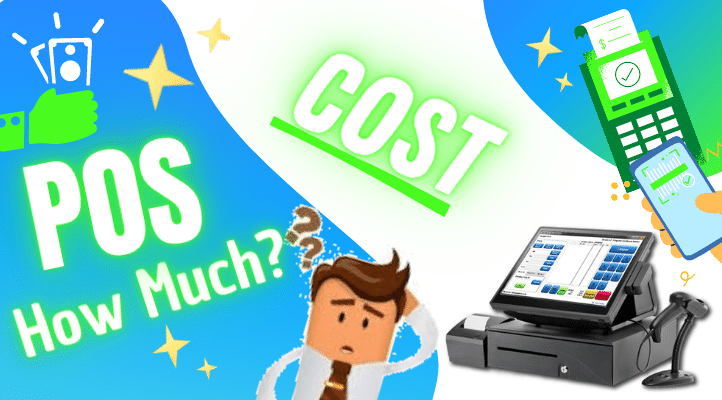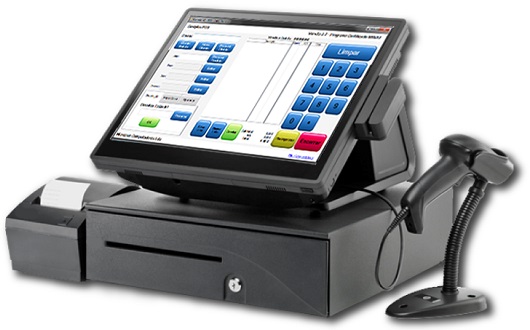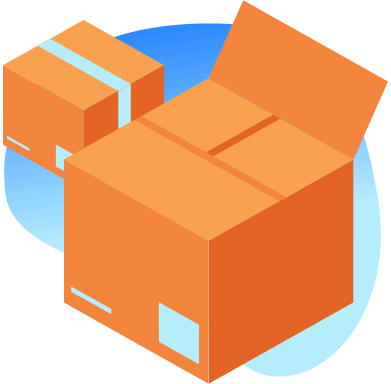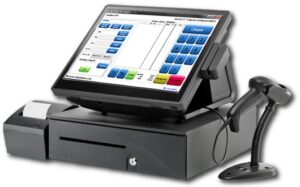
There is a good chance that you’re shopping for a suitable POS for your business. Possibly, you’re still operating your company using old methods and you’re eager to enhance your technology.
Alternatively, you may be disappointed with your current Terminal and seek one that offers better costs, functionality, customer service, or a combination of all of these factors.
Whatever the situation may be, this post may be of assistance. We’ll throw some light on the most important figures surrounding POS system pricing, and also the most important variables to take into account when setting a budget for placing an order for the service.

The cost of a point of sale
But, how much money do you need to set aside for your point of sale system? The appropriate response is that it is dependent on the scenario. The cost of a POS varies greatly based on your company’s size, the volume of sales, and demands.
Nonetheless, to provide you with an estimate, organizations with one register should anticipate spending an initial expenditure of around $1,100. Below, you will find a link to a Square web page where you may combine software and hardware to get final pricing for purchasing purposes.
Always keep in mind that such numbers are not to be considered for all POS providers. In order to accurately estimate how much you’ll end up having to pay, you’ll need to take into account a few other elements.

Your business will benefit from having a POS
There are several advantages to purchasing a POS system, the most notable is that it makes it easier to run your retail store. It has the potential to dramatically ease regular company processes.
A point of sale (POS) system is a mix of software and hardware that helps you run your business more efficiently. In order to operate the point-of-sale software, hardware such as an iPad, a physical station, the scanner, the printer, and other devices must be present. The program keeps records of and organizes the details about your shop.
It’s vital to grasp what it is, but it’s even more crucial to comprehend the advantages it may provide to your company. Purchasing this solution has a great number of advantages. Putting in place a point of sale system in your store may lead to customers having a more positive impression of your company.
Waiting time is decreased, transactions are completed quickly, and scanning of objects is accomplished quickly with a POS system. These benefits can assist your shop in establishing a strong degree of trust, a positive reputation, and tangible authority.
Undoubtedly, by taking into account the advantages of a POS system, clients may have a more favorable view of your company when compared to a business that is handled on paper. They may suggest your business to their friends and family, and they may refer you to other potential clients in the long run.

Small to large businesses can benefit from a POS system
Say you’re just starting out on your retail career path and need some improvement. You own a retail shop, one staff, and a small number of customers. Perhaps you’re still managing your operation using a pen and paper, but then you’re considering the process to be too time-consuming and inconvenient for your goals.
You want to take your business to the next level by optimizing your retail procedures. You’d like to gain some insight into your company’s analytics and learn more about your top-sellers, loyal clients, and inventory of products. At this stage of the game, you only require a simple point of sale system.
An expanding retail firm may be increasing its expansion with a more robust payment solution. You’re building stronger ties with customers, and you want to elevate the client experience even further by implementing a loyalty program and offering gift cards to customers. Maybe you are accepting online orders and have a delivery system.
You could also be interested in obtaining a deeper understanding of your company at this point. Investigate sales records broken down by branding, category, distributor, and others. You’re considering selling through a variety of distribution channels. Apart from that, you want to dive further into customer expectations so that you could always anticipate your stock levels.

POS software is used to keep track of the store’s stock
A point of purchase makes it simple to maintain track of the inventory in your shop. It enables you to manage your items in real-time and to keep track of the number of goods you have in stock at any particular point in time.
Once you get your stock, if the goods are already in your catalog, you may easily scan the objects and input the amount needed, and it will be added to the inventory of your system. When compared to manually tracking your stock, this saves a significant amount of time. As a result, your catalog will have fewer mistakes.
For each transaction, the value of the goods sold is subtracted straight from your inventory. As you can imagine, this makes it easy to keep track of the number of each product that the business currently has available in stock.
As part of their pricing structure, many point-of-sale companies take a percentage of your transactions. Additionally to your monthly membership, you may be charged a per-transaction fee of anything like 2.6% plus 20 cents.
Rates may vary based on your percentage of sales, marketing strategy, and contract, so attempt to bargain for a lower rate. Be careful to make the calculations prior to signing anything. Calculate your sales volume and the fees charged by your POS supplier so that you can obtain an indication of how much you’ll have to spend on fees.

Ordering the appropriate hardware
The POS software is only one element of your overall POS system. Purchasing the appropriate hardware is also critical. The challenge is, how much money should you invest in point-of-sale equipment?
As you might have suspected, the answer is that it all depends. Question, are you going to use an iPad to register purchases? Do you need to hand customers physical receipts? Alternatively, do you require a full-featured workstation that has a huge screen, receipt printer, barcode scanner, cash drawer, and everything else?
Consider the exact kinds of devices that you will need over the course of your checkout procedure. Make a list of all of the equipment and its associated costs, and then figure out how much will be the final cost for it.

What is the Price of a Point of Sale?
In the end, we don’t have a simple answer to the question of how much a POS System costs, but as we promised above, you can go to the Square page where you can find combined pricing for hardware and software ( GO HERE ⇗ ).
When it comes to picking the best option, there are various variables involved. So although we can give preliminary figures and estimations, you’ll really have to check the numbers for your business in order to determine the most appropriate price structure for your needs.
![]()

✓ Popular…
☰ What is a Point of Sale System? ➚
☰ Will I need a Separate Card Processor? ➚
☰ A POS System’s Most Important Features ➚
